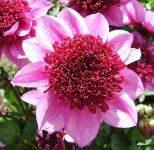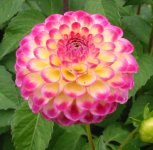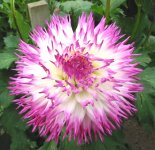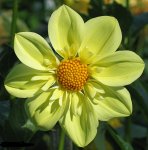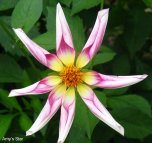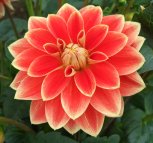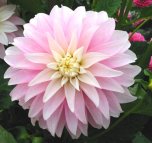Sclerotinia
Sclerotinia is becoming more common. This is a fungal disease affecting dahlias , symptoms show as browning and wilting of the stems . If the stems are split open there will be small black bodies that resemble rat droppings. The black bodies are called sclerotia. These carry the disease from one season to the next. They work in two ways. Their main function is to lay on the soil surface and produce tiny upside down like mushrooms next season. These produce millions of spores which are blown into the air and establish new infections on the aerial parts of the plant. They most commonly establish infection on the fallen florets ( petals ) which often stick to the stems of you get behindhand with deadheading. The sclerotia are also able to establish infection at ground level if they come in direct contact with a plant stem. The most important control measure for this fungal disease is hygiene. You should cut out any areas showing the browning on the stems and take special care to make sure the black bodies which look like rat droppings do not fall onto the soil. Anything cut out should be burned or taken to the tip ( not composted ), and all cut down stalks should be similarly disposed of at the end of the season. The sclerotia are also able to establish infection at ground level if they come in direct contact with a plant stem. Deeply dig the dahlia beds to bury as deeply as possible any sclerotia that will have fallen onto the soil. They can only function at or near ground level. When you have lifted your tubers cut the tops back as close to the crown and examine carefully for any signs of sclerotia. Cut out any that you see. It helps to divide the tubers at this stage. Dipping your tubers in copper oxychloride before storage may help if you are having problems with Sclerotinia. During the growing season do not allow florets to lodge on the leaves or stems and apply a suitable fungicide. Thiram seems to be the only commercially available spray now for sclerotinia.
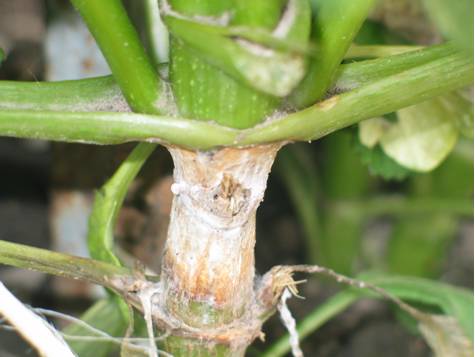
Early stage of Sclerotinia infection on stem.
|
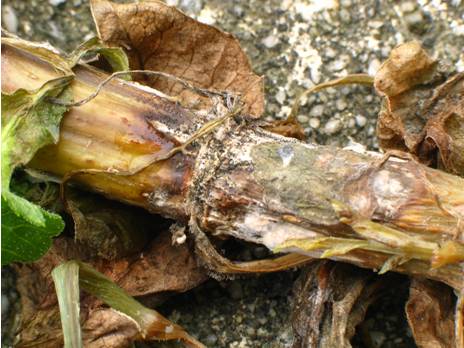
Later stage of Sclerotinia on stem
|
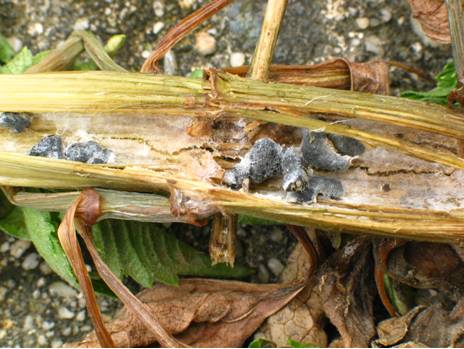
Stem opened to show black sclerotia.
|
